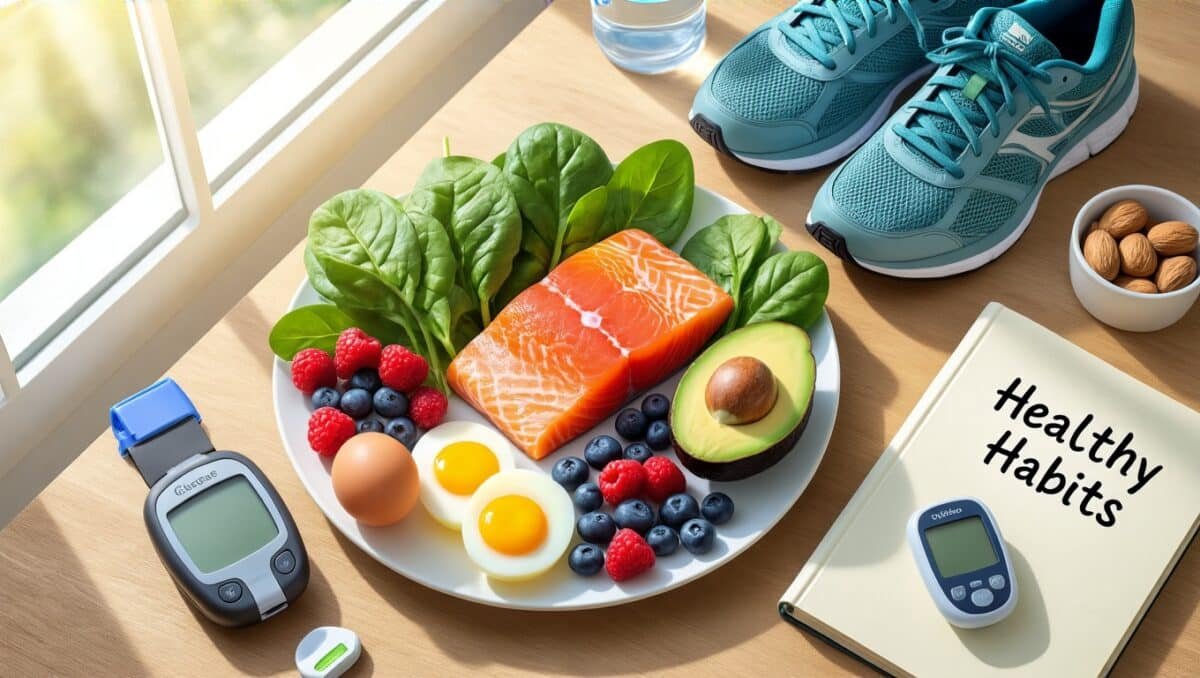How to Remove Insulin Resistance Naturally
Insulin resistance occurs when your body’s cells become less responsive to insulin, leading to elevated blood sugar levels and a higher risk of metabolic disorders.
The good news is that you can remove insulin resistance naturally by adopting practical, science‑backed strategies, ranging from targeted dietary tweaks and regular exercise to key lifestyle changes that help restore healthy insulin sensitivity and lower your diabetes risk.
Hydration and Insulin Sensitivity
Water is your body’s most essential nutrient, and it plays a surprisingly powerful role in managing blood sugar. When you’re properly hydrated, glucose is transported more efficiently into cells, and your kidneys can flush out excess sugar.
Aim to drink at least 2–3 liters of plain water daily (more if you’re active or live in a hot climate). You can also boost fluid intake with water-rich foods such as cucumbers, celery, watermelon, and oranges. Avoid sweetened beverages and limit excessive caffeine, since both can promote blood sugar spikes and dehydration.
By making hydration a priority, you lay the groundwork to remove insulin resistance naturally.
Optimizing Gut Health with Prebiotics and Probiotics
A balanced microbiome not only supports digestion, it also influences how your body responds to insulin. Beneficial gut bacteria produce short‑chain fatty acids that help regulate inflammation and enhance insulin signaling. To cultivate this ecosystem:
-
Eat a rainbow of prebiotic fibers: onions, garlic, leeks, asparagus, bananas, and oats feed the good bugs.
-
Incorporate fermented foods: kefir, yogurt with live cultures, kimchi or sauerkraut deliver helpful probiotic strains.
-
Consider a targeted supplement if you’ve recently taken antibiotics or struggle with digestive issues.
Tending to your gut health helps you more effectively remove insulin resistance naturally by reducing metabolic stress and improving nutrient absorption.
Minimizing Exposure to Environmental Toxins
Endocrine‑disrupting chemicals (EDCs) are everywhere: in plastics, personal‑care products, nonstick cookware, and even in some foods. These toxins can mimic or block your hormones, impairing insulin action over time. Here’s how to lower your toxic load:
-
Choose glass or stainless steel for food storage instead of plastic.
-
Filter tap water to remove heavy metals and chlorine by‑products.
-
Opt for organic produce when possible, particularly for items on the Dirty Dozen list.
-
Switch to clean‑label personal‑care products free from phthalates, parabens, and synthetic fragrances.
By creating a cleaner environment, you give your cells the best chance to respond appropriately to insulin and remove insulin resistance naturally.
Harnessing the Power of Intermittent Fasting
Once your foundational habits are in place, intermittent fasting (IF) can be a potent ally in lowering insulin levels. (IF) Protocols such as a daily 16:8 window or alternate‑day fasting reduce the total time your body spends processing food, giving insulin a chance to drop and receptors to “reset.” Here’s how to integrate IF safely:
-
Start gradually: begin with a 12‑hour overnight fast and increase by one hour each week.
-
Stay hydrated: water, herbal teas, and black coffee are fine during fasting windows.
-
Listen to your body: if you feel dizzy or excessively fatigued, shorten your fast or adjust meal composition by adding healthy fats and proteins.
When done mindfully, IF can accelerate your ability to remove insulin resistance naturally by extending periods of low insulin exposure.
For a deeper dive into exactly how your insulin responds during fasting, check out our guide on What Happens to Insulin Levels During Intermittent Fasting.
Tracking Progress with Wearables and Apps
You can’t manage what you don’t measure. Modern technology offers invaluable feedback loops for anyone working to reverse insulin resistance:
-
Continuous Glucose Monitors (CGMs) reveal real‑time blood sugar responses to specific meals, workouts, and stressors.
-
Fitness trackers log steps, heart rate variability, and sleep quality, helping you spot patterns linked to better or worse glucose control.
-
Nutrition and habit‑tracking apps let you record meals, moods, and energy levels—then correlate them with your biometric data.
By leveraging data, you’ll quickly learn which foods lift you up versus spike your sugar, and you’ll stay motivated to remove insulin resistance naturally through evidence‑based adjustments.
Building a Supportive Community for Long‑Term Success
Sustainable change rarely happens in isolation. When you surround yourself with like‑minded peers, you amplify accountability, shared wisdom, and emotional support:
-
Join online forums or social‑media groups focused on metabolic health and low‑carb living.
-
Find a local walking, cycling, or yoga club to turn workouts into social outings.
-
Partner with a friend or family member to plan meals, swap recipes, or check in weekly on goals.
-
Consider professional guidance from a registered dietitian, health coach, or certified personal trainer.
A strong support network not only helps you stay consistent but also makes the process of how to remove insulin resistance naturally more enjoyable and more likely to stick.







